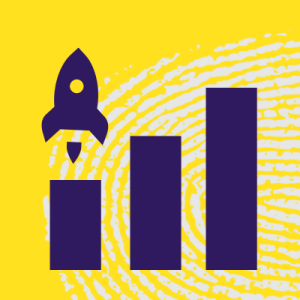Using Systems Thinking to Build Resilient and Just Organisations
Introduction
March 24, 2025
If we do what we’ve always done, we’ll get what we’ve always got. If we want to create more inclusive, equitable workplaces where more people can thrive, irrespective of background or identity we need to take a different approach. In today’s article I explore the idea of applying systems thinking to the complex topic of workplace diversity, equity and inclusion.
The goal is to spark different thinking, new ideas and new connections.
Understanding the problem
The world is not simple, nor are the inequalities that define our workplaces and societies. The systems that govern opportunity, wealth, and power have always been broken—designed to serve some while marginalising others.
To understand and address inequity, we need a new path forward. In this article we explore how taking a systems thinking approach might uncover new insights to inspire the action needed to create a more inclusive future for us all.
Taking a systems thinking approach means recognising interconnections, feedback loops, and the hidden forces shaping human behaviour. This approach does not just examine symptoms (e.g., lack of diversity in leadership) but explores the root causes embedded in social, political, and economic structures. It recognises the complexities and the limitations of taking a linear approach.
The key problem is that systems, structures, and cultures advantage some groups while disadvantaging others—often in ways that are invisible to those who benefit from them.
At an organisational level this can result in:
- Unequal Access & Opportunity – Barriers, both structural and cultural, prevent historically excluded or marginalised groups from fully participating and advancing.
- Bias & Systemic Discrimination – Conscious and unconscious biases shape decision-making, reinforcing inequities in hiring, promotions, leadership, and policy-making.
- Exclusionary Cultures & Barriers to Belonging – Workplaces and industries often centre dominant norms and ways of working, making it harder for diverse talent to feel included, heard, and valued—limiting both retention and innovation.
- Lack of Diversity & Representation– Many organisations lack diversity, particularly in leadership & technical roles, which can negatively impact decision making, creativity and breadth of insight.
- Limited Relevance & Market Reach of Products and Services – Without diverse input, organisations risk designing products and services that fail to meet the needs of a broad customer base, exclude certain user groups, or unintentionally reinforce bias—ultimately impacting competitiveness, reputation, and revenue.
At an individual level this can result in
- Limited Opportunities & Career Progression – People from marginalised backgrounds face barriers to entry, fewer promotions, and less access to influential networks.
- Feeling Excluded or Invisible – Individuals may struggle to feel a sense of belonging, leading to disengagement, lower morale, and higher turnover.
- Emotional & Cognitive Burden – Underrepresented employees often experience microaggressions, bias, or the pressure to conform, which can lead to stress, burnout, and imposter syndrome.
- Unequal Recognition & Influence – Ideas and contributions from certain groups may be overlooked, undervalued, or co-opted by those in positions of power.
- Higher Barriers to Success – People outside dominant groups often have to work harder to prove themselves, advocate for their own inclusion, or navigate workplace cultures that weren’t designed with them in mind.
True equity requires redistributing access, power, and resources, which can feel like a loss to those accustomed to systemic advantages, even when it leads to a fairer system overall.
Some efforts to correct systemic inequities—such as affirmative action, inclusive hiring, and targeted support programs—are often met with competing perceptions of fairness. Some view these interventions as necessary to level the playing field, while others see them as unfair advantages that disrupt meritocracy. This tension leads to:
- Polarised debates over whether policies are about fairness or favoritism.
- Resistance to change from those who feel excluded or perceive themselves as losing opportunities.
- A lack of consensus on what equity should look like in practice.
The goal isn’t just to “add diversity” but to redesign systems so they work equitably for a wider range of people—where inclusion is embedded, barriers to participation and success are removed and perception of the system, by all, is fair.
In order to redesign these systems we also need to consider who has agency and influence for them and how redesign might occur.
Understanding the Systems at Play
A system is a collection of elements, connected by relationships, with a purpose that can be observed through behaviour rather than stated intent. The challenge lies in the fact that multiple overlapping systems—individuals, networks, organisations, industries, societies and political systems—are all in play, influencing each other in complex ways.
Each of these systems has its own structures, feedback loops, and relationships that shape how individual’s experiences unfold. To create meaningful, lasting change, we must examine these systems holistically, recognising the different paradigms that either foster or oppose diversity, equity and inclusion.
1. Individuals: The Complexity of Human Behaviour
People are unpredictable, shaped by psychology, biases, and experiences. Human psychology influences how we interact within a system—who we trust, what information we seek, and how we navigate and are afforded power structures.
2. Networks: Who We Know Shapes Opportunity
We are social creatures, and networks define access to information, opportunity, and influence. Power is not just about individual capability but about who is connected to whom and how information flows. Structural inequality is reinforced when these networks remain homogenous.
For example, affinity bias means we are drawn to people like ourselves. This creates exclusionary networks where power remains concentrated within certain groups. If leadership is predominantly white, male, or from a particular socio-economic background, they will likely mentor and promote individuals who mirror them, perpetuating inequality without explicit intent.
Consider this: If job opportunities are primarily shared through informal networks, and those networks are racially or socio-economically exclusive, then access to high-quality jobs remains limited for those outside these groups. The system is not just about fairness in hiring—it’s about who even hears about the opportunities in the first place.
3. Organisations: The Role of Norms and Policies
Even when diverse individuals enter a system, they must conform to existing norms to survive. Organisational culture dictates behaviour, often in ways that reinforce exclusionary practices.
Organisational culture is not just about linear processes—it is shaped by deeply embedded norms, intangible values, and shared expectations that dictate behaviour.
For example, the perception that men make better leaders is not necessarily an individual belief, but rather a systemic conditioning that affects everyone, regardless of gender. The United Nations Development Programme research found that nearly 90% of people are biased against women. These norms persist because leadership structures have historically been dominated by men, reinforcing a cycle where people unconsciously associate authority with masculinity. Bias is not just external—it becomes ingrained within the very fabric of organisational culture, shaping how leadership potential is recognised and rewarded.
4. Societies and Political Systems: The Battle for Control
Organisations do not exist in isolation. They are influenced by the social, environmental and political landscape.
For example political shifts, such as Trump’s recent executive order Ending Government DEI Programs, is a direct feedback loop designed to suppress systemic change. These policies signal a resistance to shifting power dynamics, reinforcing historical hierarchies. Every action in the system will cause a reaction.
When powerful actors control both the system’s rules and its benefits, the system can become inherently dysfunctional. A political system designed to maintain racial, gender, and economic inequalities will continue to face resistance from those it excludes. Policy resistance occurs when different subsystems have conflicting goals, leading to stagnation or a deceleration in progress.
The Benefits of Workplace Inclusion and Diversity
Inclusive workplaces drive psychological safety, innovation, and high performance. When individuals feel valued and heard, they contribute more fully, collaborate better, and enhance overall productivity. Diversity fosters creativity by bringing different perspectives to problem-solving, allowing businesses to adapt and thrive in complex, changing markets. However, inclusion is not automatic—differences in background, experience, and communication styles can create friction. The challenge is not to eliminate or ignore differences but to harness them effectively.
Finding Common Ground: How Organisations Can Navigate Diverse Beliefs
Organisations must acknowledge that employees hold a range of views. The goal is not uniform agreement but the ability to work together productively despite differences. To achieve this, leaders should:
- Foster an environment of respectful disagreement.
- Encourage employees to embrace complexity and ambiguity.
- Create shared values that transcend ideological divides.
- Recognise that inclusion strengthens, rather than weakens, performance.
- Support employees in finding workplaces that align with their values.
Rather than forcing conformity, the focus should be on creating workplaces where people can disagree productively, find shared values, and contribute to a thriving system. Inclusion, at its core, is not about making everyone the same—it’s about making room for difference in a way that benefits all.
Backlash Against ‘DEI ‘and the Need for Balance
Despite its benefits, DEI has faced backlash, with critics arguing that it promotes division or prioritises identity over merit. Some fear that equity efforts create unfair advantages or undermine long-standing norms. This resistance is part of a broader pendulum swing—where progress triggers reaction, often from those who feel they are losing power.
Banning DEI efforts does not eliminate inequality—it makes it harder to measure and address. It restricts the flow of information and prevents organisations from understanding the real structural barriers in place.
Instead of allowing this divide to deepen, we need a new approach: one that acknowledges different perspectives, understands what drives resistance, and seeks common ground. To do this, we must analyse the key paradigms driving the system.
Paradigms That Shape Inclusion
Systems thinking tells us that to change a system, we must change its paradigms—the deeply held beliefs that drive behaviour, interactions and decision-making.
For example…
Paradigms That Foster Inclusion
- Inclusion presents a collective opportunity for innovation and growth.
- A fairer system for all benefits me, even if I am not currently disadvantaged by the system.
- In addition to merit success is influenced by systemic factors and access to opportunity.
- Bias awareness leads to better decision-making.
- Psychological safety enables open discussions on identity and inclusion.
- Diversity strengthens problem-solving and innovation.
- Gender and identity exist on a spectrum.
- Religion and LGBTQ+ rights must find a way to coexist.
- Equity means giving individuals the support they need to overcome barriers.
- The status quo is not inclusive
Paradigms That Oppose Inclusion
- It’s a zero sum game. More opportunity for you means less for me.
- I will lose my power and privilege.
- Success is purely merit-based; hard work alone determines outcomes.
- A “colourblind” approach ensures fairness.
- Discussing identity creates unnecessary division.
- Traditional values should be preserved.
- There are only two biological sexes.
- Certain religious beliefs fundamentally oppose LGBTQ+ inclusion.
- Giving different levels of support is inherently unfair.
- There is nothing wrong with how things are today
Stocks in the System
Stocks represent the key resources or conditions within a system that impact inclusion. They accumulate or deplete over time based on feedback loops and relationships.
For example for the organisation this might be…
- Psychological Safety: The ability to speak up without fear of retaliation.
- Workplace Trust: Employees’ belief that they will be treated fairly.
- Leadership Representation: The diversity of those in power.
- Economic Access: Equitable distribution of job and promotion opportunities.
- Public Sentiment: Social attitudes toward inclusion and diversity policies.
- Legislative Protections: Laws that either support or restrict DEI efforts.
- Knowledge & Understanding: Information upon which people are forming opinions and making decisions.
For example for individuals this might be…
- Wellbeing & Mental Health
- Physical Health
- Self Confidence
- Safety
- Empowerment & agency
- Fulfilment
- Belonging
- Purpose
- Respect
- Feeling valued
- Engagement
- Happiness
Feedback Loops & Relationships That Influence Stocks
Feedback loops drive systemic behaviours, either reinforcing existing dynamics or creating change.
For example…
- Reinforcing Loop: When leaders from diverse backgrounds are promoted, they mentor others like them, increasing representation.
- Balancing Loop: Backlash against DEI leads to restrictive policies, slowing progress and shifting power dynamics.
- Exclusionary Networks: Informal professional networks limit opportunities for those outside dominant groups.
- Policy Resistance: Legislative changes supporting or opposing DEI create long-term effects on inclusion efforts.
- Information Flow: Misinformation or selective narratives about DEI efforts shape public and corporate attitudes. The suppression of DEI conversations is a direct attempt to control who has access to knowledge about systemic barriers. Without data and discussion, inequalities remain unchallenged.
- Language: Over time, words evolve and take on different meanings, sometimes fostering clarity and shared understanding, but often creating confusion and division. When terms like “woke” or “DEI” are interpreted in vastly different ways by different groups, it disrupts meaningful dialogue and makes it harder to find common ground. Without a shared language, progress becomes difficult, as conversations stall over definitions rather than driving action.
- Delays: Social change takes time. Short-term resistance should not be mistaken for failure. Systemic shifts often take generations to manifest.
Signs of a Poorly Functioning System
For example at the organisational level…
- High attrition rates among underrepresented groups.
- Persistent pay and promotion gaps.
- Employees report low psychological safety and workplace trust.
- DEI efforts are performative with no measurable impact.
- Organisational resistance leads to policy stagnation or rollbacks.
- Polarised attitudes prevent constructive dialogue.
- Discrimination and unfair treatment.
- Employees feel scared to voice their concerns.
Signs of a Well-Functioning System
For example at the organisational level…
- Inclusion is embedded into company culture and policies.
- Individuals do not face identity based barriers or challenges.
- Psychological safety is high, and employees can voice concerns without fear.
- All parties perceive the system to be fair.
- Leadership reflects the diversity of the workforce.
- Decision-making includes multiple perspectives.
- Constructive disagreement is encouraged, fostering innovation.
How Systems Thinking Helps Identify Key Challenges
A systems thinking approach potentially allows us to move beyond surface-level debates and address the deeper structures driving inequality. By mapping out feedback loops, understanding paradigm conflicts, and examining stocks, we can:
- Identify leverage points—places where small changes can create significant impact.
- Improve information flow—ensuring transparency and reducing misinformation.
- Balance competing interests—finding solutions that work across ideological divides.
- Acknowledge complexity—accepting that discomfort and disagreement are inevitable.
- Imagine different futures– explore how changes in the systems can create different outcomes.
The best-functioning systems are resilient, self-organising, and inclusive, adapting to change rather than resisting it.
The real challenge is not just in making space for diverse voices but in changing the very structures that define opportunity, influence, and success. Until we redesign the system itself, we will continue to see the same inequalities reproduced over and over again.
Past, Present, and Future Scenarios
To drive meaningful change in workplace diversity, equity, and inclusion (DEI), we must understand the systems that have shaped where we are today and explore future possibilities. Systems thinking helps us see the interconnections between historical structures, societal norms, organisational policies, and individual behaviours—allowing us to intervene effectively for a more equitable future.
The Past: How We Got Here
The workplace has never existed in isolation; it has always been shaped by historical systems of power, privilege, and exclusion. Key factors influencing today’s workplace DEI landscape include:
- Historical Exclusion from Opportunity – Many groups, including women, people of colour, disabled individuals, LGBTQ+ people, and working-class communities, were historically excluded from education, wealth-building, and professional advancement.
- Industrial-Era Workplace Models – Work structures were built around dominant groups (e.g., white, male, able-bodied, heterosexual norms), with little regard for other lived experiences.
- Legal & Policy Shifts – While civil rights movements and anti-discrimination laws have driven progress, policies alone haven’t dismantled the cultural and structural biases that persist in organisations.
- Bias Embedded in Systems – Recruitment, performance evaluation, leadership selection, and workplace culture have all been shaped by systemic biases that continue to impact who thrives and who struggles in the workplace today.
The Present: Where We Are Now
Despite progress, organisations are still grappling with:
- Unrealised potential – Suboptimal performance due to a lack of diversity, equity and inclusion.
- Unequal access to leadership and decision-making roles – Many industries remain dominated by specific demographics, limiting diverse perspectives in shaping policies, products, and culture.
- Resistance to DEI efforts– As some organisations push for greater inclusion, others push back, questioning whether these initiatives are “fair” or “necessary.”
- Balancing equity with perception of fairness– How to redesign systems and redistribute opportunities & power so that advantages are not hoarded by certain groups but accessible to all, without undermining the perception of fairness.
- Performative vs. Systemic Change – Many DEI efforts focus on surface-level diversity (e.g., hiring quotas) without addressing deep-rooted structures and cultures that reinforce inequities.
- Innovation & Market Risks – Companies that fail to prioritise diversity risk creating products and services that exclude or harm certain user groups, leading to reputational damage and missed market opportunities.
- Shifting societal norms – Outdated stereotypes and differing views about gender, race, disability and other aspects of human identities create bias and exclusion.
The Future: Two Extreme Scenarios
Imagine a world where:
✅ Equity is embeddedin workplace policies, culture, and leadership, ensuring fair access to opportunities.
✅ Workplaces are designed for all, not just a dominant group, creating environments where diverse employees thrive.
✅Bias is actively mitigated, with hiring, promotions, and decision-making reflecting a broad range of perspectives.
✅ Innovation flourishesbecause diverse teams create products and services that better serve all of society.
✅ Economic & social mobility are strengthened, as access to education, careers, and leadership is based on potential, not identity.
2. The Future of Widening Divides (A System Left Unchecked)
Alternatively, if exclusionary systems persist or worsen, we face a future where:
❌ Opportunities are further concentratedamong dominant groups, making workplaces increasingly homogeneous, especially at the top.
❌ Bias-driven decision-makingcontinues to disadvantage certain groups, reinforcing systemic barriers.
❌ DEI efforts are rolled back, with organisations framing inclusion as “optional” or “divisive.”
❌ Polarisation deepens, as marginalised employees feel alienated, and resentment grows among those who perceive DEI as a threat.
❌ Economic and social stagnation results from a lack of diverse talent, ideas, and innovation—harming businesses, industries, and communities.
This trajectory would not only be unethical but also unsustainable, leading to increased inequality, unrest, and loss of competitiveness.
The Path Forward: Designing for an Inclusive Future
A shift toward a future of equity and inclusion, requires us to:
- Apply Systems Thinking – Address DEI at the structural level, rather than treating it as a series of events and HR initiatives.
- Reframe equity – Help people understand that equity is about removing systemic barriers and expanding opportunity, not creating unfair advantages.
- Find common ground– Focus on what unites us, find new language that allows common understanding and use our differences to drive collective strength not division.
- Embrace, not ignore differences – Seek out diverse perspectives and design for diversity, while ensuring inclusion for all.
- Pressure test for fairness – Develop a more nuanced understanding of fairness, ensuring that interventions address inequities without creating new forms of exclusion or division.
- Embed DEI in Business Strategy – Prioritise inclusion in leadership, innovation, and market strategy, rather than treating it as a separate agenda.
- Build Accountability Mechanisms– Ensure leadership commitment is backed by real metrics, policies, and cultural shifts that drive meaningful change, not performative action.
- Design for the Future, Not the Past – Create work environments that reflect the realities of diverse talent, customers, and global markets.
- Continuously refine approaches – Recognise that systems are in a constant state of change, which requires continual testing for effectiveness and unintended consequencesand refinement.
- Find language that unites– Establish ways of communicating that create alignment and understanding not division, demonising others, and fear.
DEI is not just a moral imperative—it is a strategic, economic, and societal necessity. Whether we move toward greater inclusion or deeper divides depends on the choices we make now.





